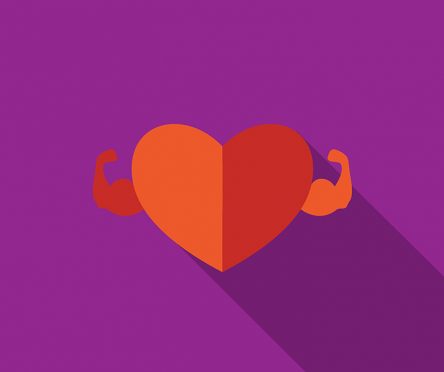During the first two years of the pandemic, sales of at-home exercise equipment like the Peloton bike soared as people sought to stay active while isolating, but recent television scenes in which machine use sparks serious heart attacks has some concerned.
In one show – “And Just Like That,” the reboot of HBO’s “Sex and the City” – the heart attack is fatal. (To find out what Carrie should have done in a real-life emergency, click here.) In the other – Showtime’s “Billions” – the character survives. Yet, despite someone in the United States having a heart attack every 40 seconds, nothing points specifically to exercise machines as a danger.
“The perception that there are more heart attacks when people are riding the Peloton or other exercises is untrue. It is only more shocking because it is not normal,” said Bradley Biskup, a physician assistant with the new Lifestyle Medicine Program at the Hartford HealthCare Heart & Vascular Institute. “You don’t hear about the 65-year-old obese, high-cholesterol, high-blood-pressure diabetic having a heart attack watching TV.”
Biskup – an exercise specialist certified by American College of Sports Medicine who has presented on exercise at national professional conferences – said the likelihood of having a heart attack while exercising is about 40 percent less than people who do not exercise. This is true for both high- and moderate-intensity activities.
The risk does increase, however, for non-exercisers starting high-intensity routines because their bodies are not accustomed to the stress, Biskup said. The recommendation would be to start with moderate intensity exercise for three to four weeks before amping-up the intensity.
“Even then, there should be a gradual increase in intensity in each workout and then a gradual decrease to cool-down,” he said, noting that Peloton and other exercise trends are not a threat by themselves. “If we are extremely sedentary, it is more of a shock to the body.”
Anyone looking at a new form of exercise should first consider cardiovascular risk factors. This includes family history, high bad cholesterol, diabetes, stress, poor diet and sleep habits. Consulting a primary care provider is also important.
When exercising, Biskup urged people to be aware of signs they’re overdoing it.
“Listen to your body. The perception of ‘no pain, no gain’ is not accurate. The higher the intensity, the greater risk of injury and non-compliance,” he said, adding that signs of overdoing it can include chest discomfort and more shortness of breath compared with other times exercising.
Bring those symptoms to your healthcare provider before continuing to exercise. You can always do low-intensity activities like walking to stay active until your appointment.
Overall, slow, committed workouts are more effective, Biskup said.
“If exercise is considered a medicine, you have to be able to take it on a regular basis and it should be prescribed specifically for you,” he noted. “Exercise, if prescribed effectively, can treat and prevent more than 40 diseases!”
For more information on heart health, click here. For a list of upcoming webinars and events, click here.



